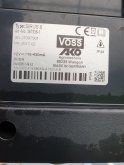Hi,
I'm having a bit of trouble working out what size bolt on fuse I require at my batteries...
My setup is:-
1x100w mono panel
30amp Epever tracer solar charger.
12 x12v fused box for my lighting.
Bus bar.
1 x 40amp breaker
8Awg cable controller side of the breaker.
4Amg cable from breaker + bus bar to battery
Batteries are:-
2 x 140ah 12v deep cycle marine/leisure
Which will be run in parallel.
The label on the Battery info:-
Type: L140
140Ah
1000 CCA
Deep Cycle
Any guidance would be very welcome...
I have to get this right as it's going to run all the lighting for 5 stables 3 out buildings 3 yard lights and the electric fence energiser...
Thanks in advance
I'm having a bit of trouble working out what size bolt on fuse I require at my batteries...
My setup is:-
1x100w mono panel
30amp Epever tracer solar charger.
12 x12v fused box for my lighting.
Bus bar.
1 x 40amp breaker
8Awg cable controller side of the breaker.
4Amg cable from breaker + bus bar to battery
Batteries are:-
2 x 140ah 12v deep cycle marine/leisure
Which will be run in parallel.
The label on the Battery info:-
Type: L140
140Ah
1000 CCA
Deep Cycle
Any guidance would be very welcome...
I have to get this right as it's going to run all the lighting for 5 stables 3 out buildings 3 yard lights and the electric fence energiser...
Thanks in advance






